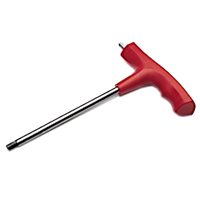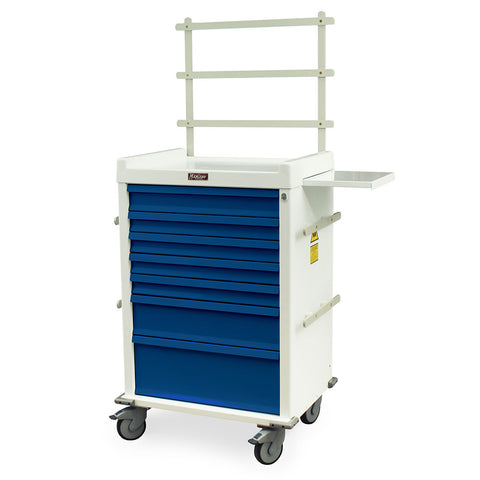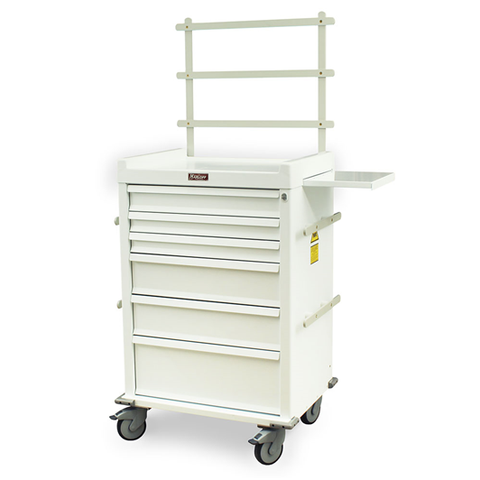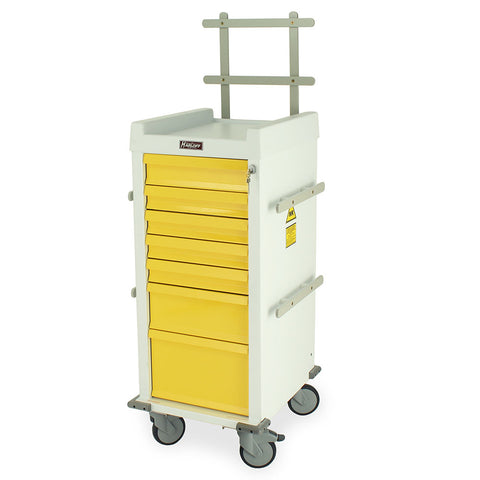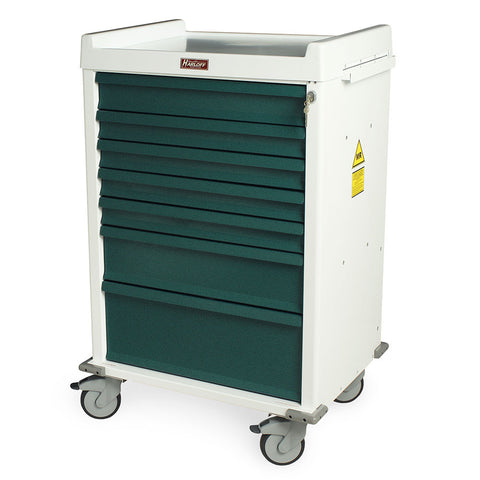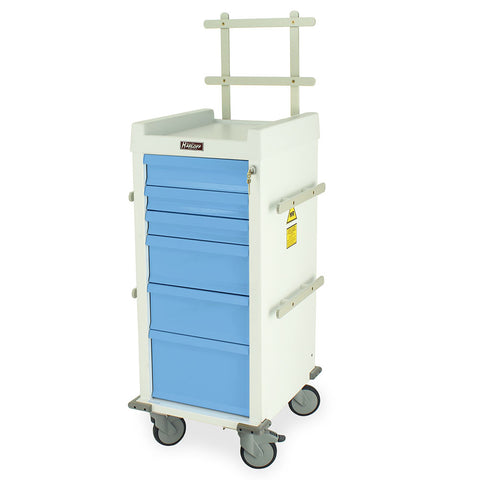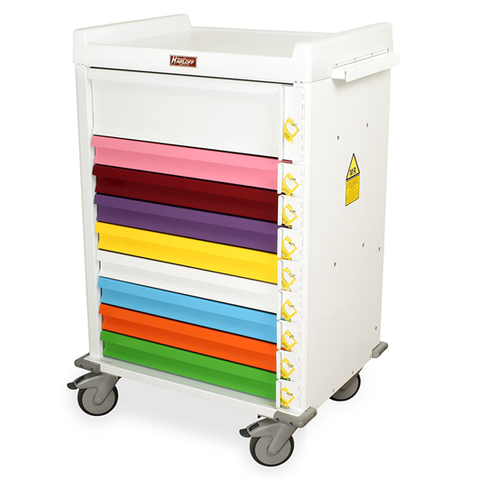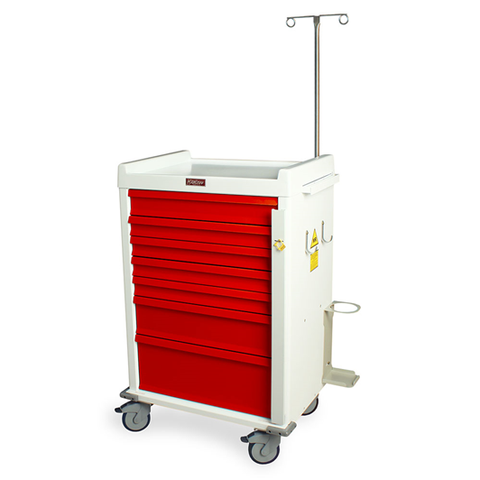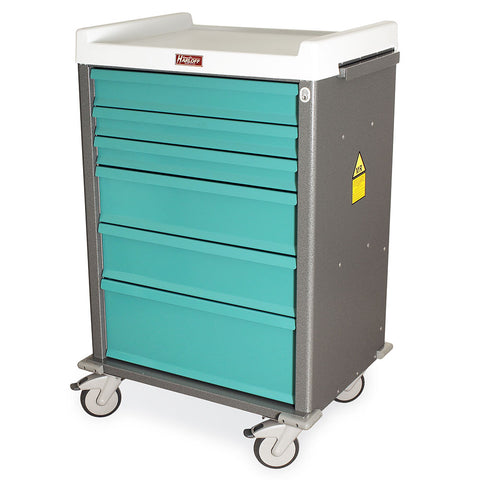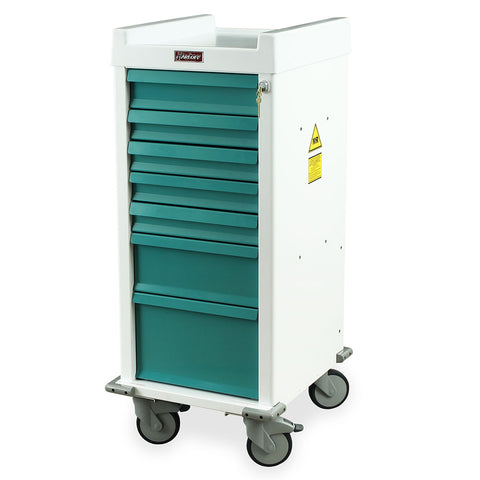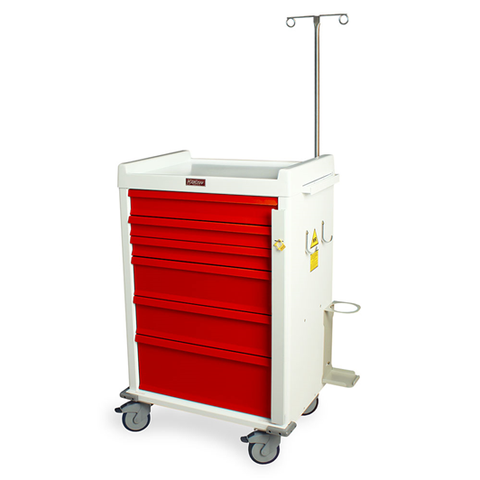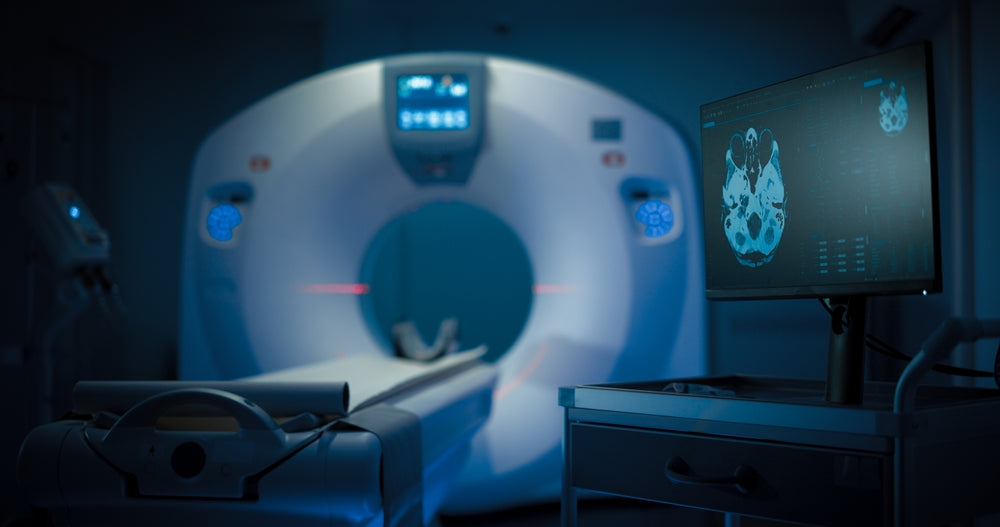
MRI suites are specialized areas where strong magnetic fields are present. Every device in these rooms—from stretchers and wheelchairs to IV poles and monitors—must be carefully selected to avoid safety risks and prevent interference with imaging. Using non-magnetic medical equipment ensures patient safety, reduces liability, and maintains diagnostic image quality.
At MRI Med, we provide a comprehensive selection of non-magnetic hospital equipment specifically designed for MRI suites. Our products are tested and certified using current ASTM terminology and include MR Conditional stretchers, MR Conditional wheelchairs, IV poles, oxygen tanks, and various accessories for patient care.
MRI Med’s commitment to safety, compliance, and practical design ensures hospitals and imaging centers can deliver excellent patient care while maintaining MRI operational efficiency.
What Does "Non-Magnetic" Mean in Medical Equipment?
MR Safe vs. MR Conditional
The term "non-magnetic" in MRI environments is defined according to ASTM F2503 standards, which categorize medical equipment as MR Safe, MR Conditional, or MR Unsafe.
-
MR Safe: Items that pose no known hazards in all MRI environments. Examples include purely plastic equipment or non-conductive accessories.
-
MR Conditional: Items that have been tested and verified to be safe under specific MRI conditions, including field strength, orientation, and RF exposure. Most MRI-Conditional stretchers fall into this category.
By using MR Conditional or MR Safe equipment, hospitals prevent hazards caused by magnetic attraction or RF-induced heating, ensuring patient and staff safety.
Magnetic Fields in MRI Rooms
MRI machines generate strong static magnetic fields (typically 1.5T or 3T in clinical settings) and time-varying gradient fields. Ferromagnetic objects in these environments can:
-
Become dangerous projectiles
-
Interfere with imaging
-
Cause heating or induced currents
For example, a standard hospital stretcher containing steel components could be pulled toward the magnet, endangering both patients and staff. Using MRI-Conditional equipment prevents such incidents.
Dangers of Using Ferromagnetic Equipment
Ferromagnetic equipment can compromise both safety and image quality. Magnetic interference can produce artifacts in images, making it difficult to interpret MRI scans. Staff must always confirm that equipment entering the MRI room is either MR Safe or MR Conditional.
Types of Non-Magnetic Equipment for MRI Rooms
Non-Magnetic Gurneys and Stretchers
MRI-Conditional stretchers are designed to transport patients safely into the MRI scanner. These stretchers use aluminum frames and high-strength polymers, avoiding ferromagnetic components.
At MRI Med, products include:
-
MRI Med Adjustable Height Stretcher: Fully MR Conditional, with an adjustable-height aluminum frame, non-magnetic casters, and padded patient support.
-
MRI Med Bariatric Stretcher: Designed for larger patients, offering higher weight capacity while maintaining MR Conditional certification.
These stretchers are tested for magnetically induced displacement, torque, and RF heating, ensuring patient safety in MRI suites.
Workflow example: In a hospital MRI suite, staff use the MRI Med Stretcher to transfer patients from the holding area to the scanner without any need to switch equipment or pause scanning, improving operational efficiency.
Related blogs: Top 5 MRI-Conditional Stretchers in 2025 | What Makes a Stretcher MRI-Conditional?
MRI-Conditional Wheelchairs
Wheelchairs in MRI suites must also be MR Conditional. At MRI Med, our wheelchairs feature non-magnetic frames, wheels, and braking systems, allowing safe patient transport.
Workflow example: Patients arriving at the MRI suite can be seated in an MRI-Conditional wheelchair and transferred directly onto an MRI stretcher, reducing patient discomfort and minimizing handling.
IV Poles and Patient Monitors
IV poles in MRI rooms are designed with non-magnetic aluminum or polymer construction. Patient monitors also must avoid ferromagnetic components to prevent hazards or interference. MRI Med provides:
-
MRI-Safe IV Poles: Adjustable height, MR Conditional, and smooth-rolling non-magnetic wheels.
-
MRI-onditional Patient Monitors: Non-magnetic casings with MR Conditional certification.
Scenario: A patient receiving IV therapy during an MRI can have their IV fluids safely administered using MRI Med’s MR Conditional IV poles without risk of interference or heating.
Oxygen Tanks and Support Devices
Even essential devices like oxygen tanks must be MR Conditional. MRI Med supplies:
This ensures respiratory support devices are safe for patients during scans.
Related blogs: Complete List of Non-Magnetic Equipment for MRI Suites
Materials Used in Non-Magnetic Equipment
Aluminum, Titanium, and Plastics
Materials must avoid ferromagnetic properties. Commonly used MR Conditional materials include:
-
Aluminum: Lightweight, strong, and MR Conditional.
-
Titanium: Durable and non-magnetic, used in specialty equipment.
-
High-strength polymers: For padding, casters, and minor structural components.
For example, MRI Med stretchers combine aluminum frames with polymer supports to create a sturdy, MRI-safe patient transport solution.
How Materials Are Tested for Safety
Testing includes:
-
Magnetic attraction: Ensuring the item does not move in a magnetic field.
-
RF heating: Confirming no dangerous heat generation.
-
Mechanical integrity: Verifying durability for patient support.
All MRI Med equipment meets ASTM F2503 requirements and is accompanied by proper labeling.
MRI Zone Safety: Equipment Requirements by Area
Zone III vs. Zone IV Explained
-
Zone III: Staff-only area; limited MR Conditional equipment allowed under supervision.
-
Zone IV: MRI scanner room; only MR Safe or MR Conditional equipment is permitted.
Access and Usage Protocols
MRI Med products are clearly labeled with MR Conditional icons, making it easy for staff to comply with MRI suite protocols. Proper labeling prevents accidental introduction of unsafe devices into Zone IV.

Related blogs: MRI Zone IV: What Equipment Is Allowed?
Choosing the Right Equipment for Your MRI Suite
Checklist: What Every MRI Suite Needs
Essential items include:
Vendor Certification & Proof of Compliance
Only purchase equipment with proper ASTM F2503 documentation. MRI Med provides detailed testing results, ensuring MR Conditional compliance and safe patient care.
Related blogs: How to Identify Non-Magnetic Hospital Equipment (Even Without Labels) | The Science Behind Non-Ferromagnetic Medical Devices
FAQ:
1. Can I use standard hospital stretchers in MRI rooms?
No. Standard stretchers often contain steel and other ferromagnetic materials, which can be pulled into the magnet, causing injury or imaging artifacts. Only MRI-Conditional stretchers like MRI Med Transport Stretcher are safe.
2. What does MR Conditional mean?
MR Conditional indicates the equipment is safe under specific MRI conditions, including defined field strength, orientation, and RF exposure. MRI Med products clearly specify these parameters.
3. How often should non-magnetic equipment be inspected?
Inspect before each patient uses and follow manufacturer maintenance guidelines to ensure continued MR Conditional compliance.
4. Are all non-magnetic materials safe for MRI?
No. Only materials tested and certified as MR Safe or MR Conditional are suitable, such as aluminum, titanium, and specialized polymers.
5. Can MRI accessories like blankets or restraints be MR Conditional?
Yes. MRI Med provides MR Conditional accessories designed for patient safety and imaging compatibility.
Related Articles
